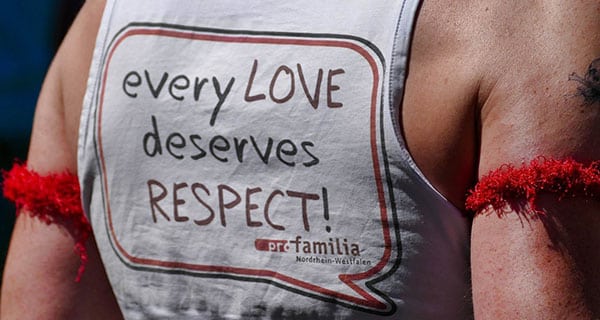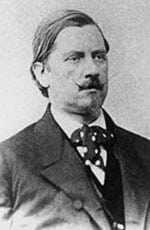 It would be hard to think of a period in human history where social attitudes have changed at the dizzying speed of today.
It would be hard to think of a period in human history where social attitudes have changed at the dizzying speed of today.
In the past few decades, traditional sexual mores have been severely eroded, long-established concepts of marriage declared to be bigoted, basic concepts of male and female repudiated, and gender identities fragmented into outright fluidity.
To this end, Frontier Centre’s coverage of Culture Wars takes a critical look at the ideas, means and history behind this transformation.
It would surprise most people to know the terms ‘homosexual’ and ‘heterosexual’ are recent inventions. They were coined just 150 years ago in a letter written by Karl-Maria Kertbeny to Karl Heinrich Ulrichs. The purpose of declaring homosexuality as an orientation was to legitimize it, thereby removing its social stigma and legal censure.
Such ideas were further advanced by the suspect studies of Alfred Kinsey 70 years ago, turning them into dominant medical, then public, opinion.
Ironically, Kertbeny was fickle about his historic ideas, and quietly thought they might jeopardize his pretentious goals.
It was on May 6, 1868, that Kertbeny, a Hungarian-born travel writer whose mother tongue was German, coined the term homosexual in his letter to Ulrichs. Ulrichs was a German judge who had declared his love for men in 1862. He borrowed the term ‘urnings’ from Plato’s Symposium to describe those of his bent and argued, “We make up a third sex. … We are women in spirit.” Ulrich divorced sexual identity from sexual biology to create orientation and gender identity based on spirit, all to argue the legalization of homosexuality.
Kertbeny came to share Ulrichs’ goal and advanced similar arguments in his famous letter. Current observers might note some irony in one of Kertbeny’s musings found in his diaries: “How did I, a normally sexed individual, ever stumble onto the existence of homosexualism and its slaves, who, up to that point, I had no idea were present in human society?” Kertbeny, arguably the conceptualizer of sexual orientation, equates heterosexuality with normal sexuality.
Jason Salamone documents Kertbeny as a “writer who had associations and friendships with pederasts (adult men who are attracted to post-pubescent teen males).” In her work The Double Life of Kertbeny, Judit Takacs all but states that Kertbeny became one himself. His diaries are full of ink blots that reflect self-censorship in evident fear he would be discovered. (He also records that he burned other papers.) Even so, he frequently recounts his affection for males and their appearance, ones he describes as “boy” or “lad.” He also complained of bouts of gonorrhea, and his sympathy for the “boy” of his affection, named Jansci, who shared them. Kertbeny feared that a lieutenant would discover “dangerous games” he played with Jansci during the mornings and that everything could be heard in the next room. At one point, police came to his door and seized his list of 150 ‘urnings’ who lived in Berlin.
Thus, Kertbeny’s fight for homosexual rights was not merely guided by empathy and political philosophy, but by a vital quest to enjoy his sexual indulgences without fear, ostracism or imprisonment. In the view of Takacs, “the main issue was not whether same-sex attraction be innate or not, but that people ought to have the right to be left alone by the state in their intimate lives. The word homosexuality was introduced in the struggle for homosexuals’ rights. … Kertbeny did not seek biological arguments … instead he made the point that the modern state should extend the principle of not intervening in the private lives of citizens to cover homosexuals too.”
Kertbeny’s letter identifies four sexual orientations. Here heterosexuals and homosexuals had the counterparts of “monosexuals” (masturbators) and “heterogenists” (beastialists). It’s interesting to note that he equated heterosexuals with “normal sexuals.” He also had four sub-categories of homosexuals, including “platonism,” which Takacs explains is the “love of older men directed towards younger boys, without any sexual practice and dirty thoughts.”
Kertbeny knew if he could make heterosexuals appear as guilty of sexual taboos as those with other orientations, it would be difficult to argue why those living out their orientations should be imprisoned. This required the unfounded argument that heterosexuals had a much stronger sex drive than those of the other categories, but simultaneously practised as much sexual deviance as other groups. This argument is problematic since it acknowledges that people do sex acts outside of their orientation, meaning orientation is nothing more than personal wanton desire.
Bad arguments or not, Kertbeny changed history. In 1886, his term “normal sexuality” was first adopted in the medical journal Psychopathia Sexualis.
Kinsey published enormously skewed and flawed research that backed Kertbeny’s claims: mainstream heterosexuals were as guilty of sexual taboos as anyone. From there, activists herded psychological perspectives, popular opinion, and legal jurisprudence to all the ends until all that Kertbeny envisioned were manifested. His biased self-interest, lack of evidence, contradictory argumentation and self-refutations were left to dark, dusty corners, nearly invisible against the blinding light of his victories.
It’s just one more reason to believe the Mark Twain adage, “Never let the truth get in the way of a good story.”
Lee Harding is research fellow for the Frontier Centre for Public Policy.
The views, opinions and positions expressed by columnists and contributors are the author’s alone. They do not inherently or expressly reflect the views, opinions and/or positions of our publication.



